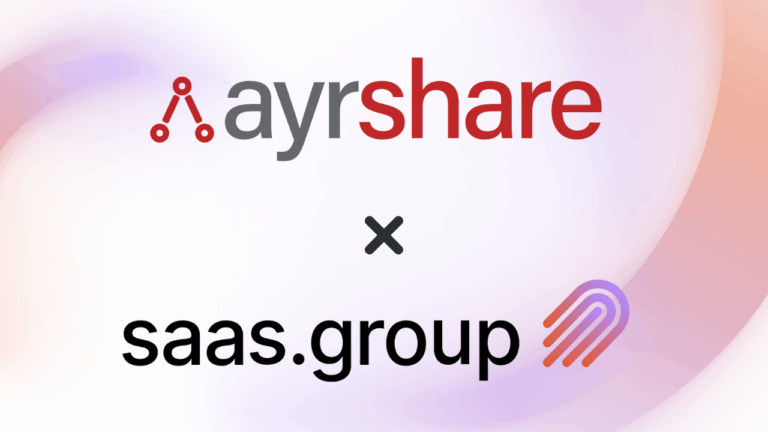When people talk about AI in SaaS right now, it’s usually one of two extremes:
- “AI will magically fix everything.”
- “AI is going to destroy my business.”
At saas.group, we live firmly in the middle: AI is neither magic nor optional.
It’s a new operating system for how people work and how products compete. And if you’re thinking about selling your SaaS to us, that’s exactly the world you’d be joining.
In two recent conversations – one with Belma Ibrahimović, our Head of AI, and one with Tim Schumacher, our co-founder – a very clear picture emerged of what “AI-empowered” means at saas.group, and what founders can expect when they become part of the family.
What “AI-empowered” means at saas.group
We deliberately keep our AI strategy simple. For us, AI-empowered means just two things:
- Everyone uses AI in their daily work.
Not as a side experiment but as a natural part of how we do things here. Asking, “How can AI help me do this better?” becomes a new norm. - AI powers our products – where it actually helps users.
We don’t think every feature needs “AI” in the label. But wherever AI can unlock something that was hard or impossible before, we use it.
Tim adds the strategic layer to this: AI isn’t a side project or a marketing angle. It’s the biggest shift since the early internet. It changes:
- How work gets done inside the company
- How products are built and delivered
- How customers discover, evaluate, and stick with software
That’s why we’ve called 2025 the Year of AI at saas.group. For us, it’s not just a slogan, it’s the way we are rearranging how things run.
If you sell your company to us, this is the culture you’re walking into.
The “aha moment” we want everyone to reach
Belma says: “Think about that small task you never want to do manually again.”
That’s the starting point.
- A weekly report you hate formatting
- Customer feedback you never quite find time to tag and analyse
- Repetitive support questions
Her advice is very simple:
- Pick one boring, repetitive task.
- Pick one tool – ChatGPT, Claude, an internal agent, code assistant – whatever fits your flow.
- Sit with the tool. Properly. Not 3 minutes between calls. Put some effort and block a couple of hours for it.
And now, you have to leave your ego and unrealistic expectations at the door. You’re not trying to prove “AI doesn’t really work”, but not waiting for a miracle solution out of the box either.
Instead, you take responsibility for setting the tool up for success:
- Give it proper context
- Explain the task like you would to your very human assistant
- Iterate on the prompt, the data, the format
- Debug the results, not just complain about them
At some point in that messy, mildly frustrating process, the tool will suddenly do something that actually saves you time or unlocks new possibilities.
That’s the “aha” moment we’re after.
How we actually enable people
To make AI part of everyday work, Belma focuses on lowering three barriers:
- Access – Clear, safe tools people can actually use
- Time – Real working hours reserved for learning and experimenting
- Hands-on practice – Not just talks and decks, but building things
Here’s what that looks like in practice at saas.group – and what your team can expect if you join:
- We maintain role-based playbooks and internal docs with the list of the tools we support, information on the most optimal use-case (e.g. ideation vs coding vs automation), and shared prompts, tips, and real examples from our brands.
So no marketing lead, CS manager, or product designer need to trial 25 tools and burn weeks of time. There’s a guided starting point – and room to explore from there. - We proactively block time in people’s calendars for AI learning and building. Not as “optional homework after hours,” but as actual work time. And then people spend it Watching tutorials, building a small internal tool, re-wiring a workflow with AI, or pairing with someone from another brand to learn how they work
- We run weekly sessions on building, coding, and automating with AI. They are show-and-share hours, not lectures. Teammates demo what they’re actually doing in their brand.
These experiments are often messy and imperfect, but they help normalize talking about AI and making it a part of the routine. - We run remote, group-wide AI hackathons where people from different brands collaborate on very real problems. It’s a great, fun way to explore what’s possible, help different brands, and strengthen collaboration.
What AI means for products in the portfolio
From Tim’s view, AI is already redrawing parts of the SaaS landscape:
- New AI-native tools are winning share in certain categories
- Some established tools are under pressure as their core features are replicated or automated by models
- Interfaces and workflows are shifting even when the underlying job-to-be-done stays the same
When we evaluate a company, we ask questions like:
- What unique or rich data does this product have, and how could AI unlock it?
- Is the product API-ready and agent-friendly?
- Where would AI make the biggest difference to the user?
Our brands in the group are already using AI to:
- Reframe their product offering
- Reach new customer segments
- Restart growth after a period of stagnation
Why AI shapes founders’ decision to sell
As AI reshapes markets, founders face a simple but high-stakes reality:
- Their product might gain new opportunities thanks to AI.
- It also faces new types of competition and shifting user expectations.
For a founder whose wealth and identity are tied to one SaaS business, this creates genuine concentration risk.
So when founders decide to sell in this phase of the market, AI is often part of the reasoning:
- It can feel like the right moment to de-risk personally, while the product is still strong.
- It can also feel like the right environment to plug into shared AI expertise and infrastructure, instead of building it alone.
Long story short: AI doesn’t just change how SaaS products are built and used. It also changes how founders think about timing, risk, and the kind of home they want for their company, which is exactly the space saas.group is working in.
If our values speak to you and resonate with how you do business, get in touch. Discuss your options with our M&A team: Guillaume Lussato (guillaume@saas.group) or Pavel Prokofiev, ACA vel (pavel@saas.group). Learn more about how we grow acquired brands on our blog and podcast pages.
Table of Contents
Weekly newsletter
No spam. Just the latest news and articles from the world of SaaS and Acquisitions.




